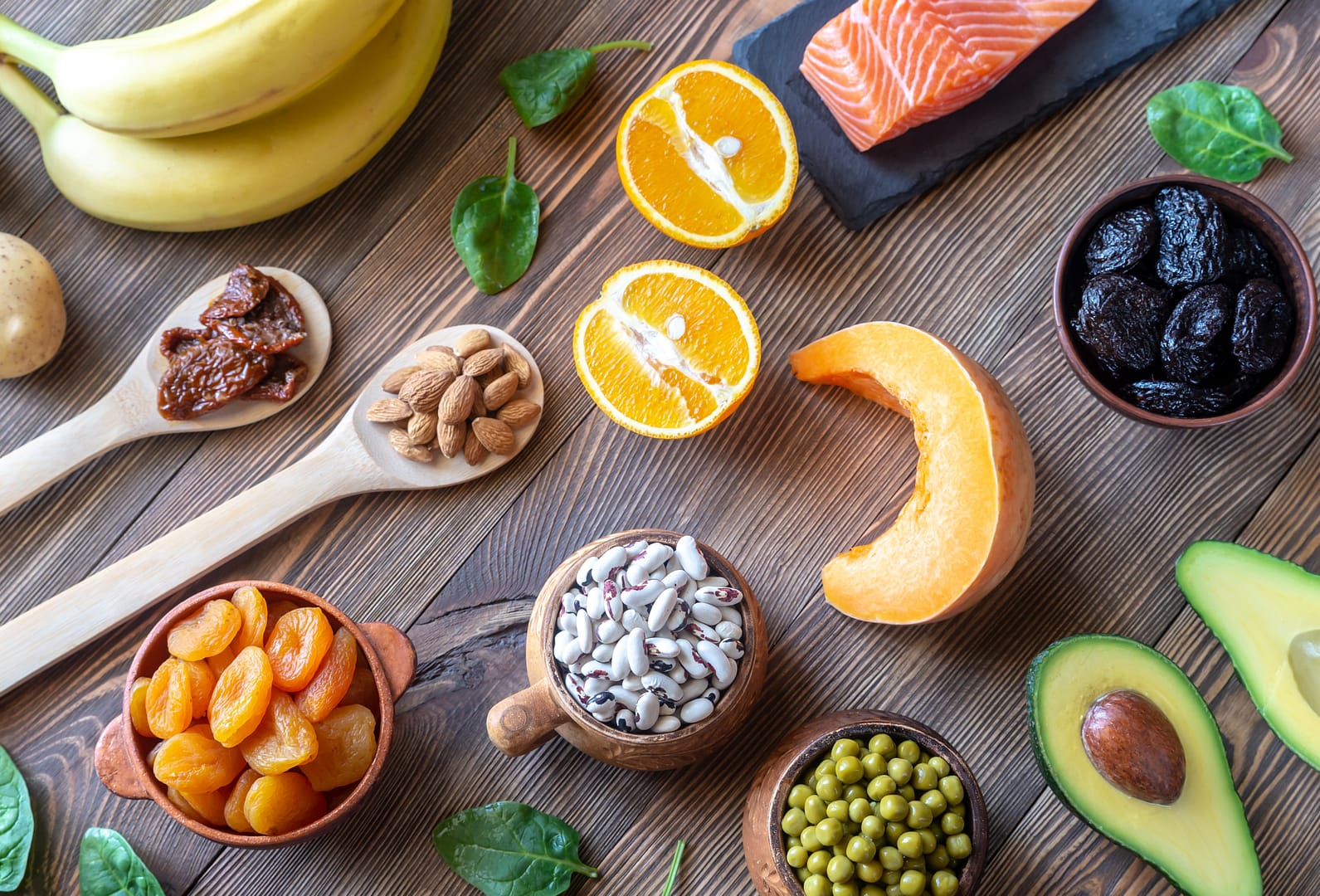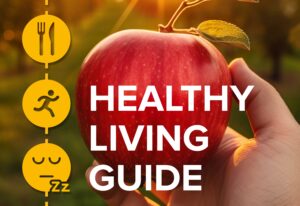
Potassium | The Nutrition Source | Harvard T.H. Chan School of Public Health – HSPH News
Potassium is an essential mineral that is needed by all tissues in the body. It is sometimes referred to as an electrolyte because it carries a small electrical charge that activates various cell and nerve functions. Potassium is found naturally in many foods and as a supplement. Its main role in the body is to help maintain normal levels of fluid inside our cells. Sodium, its counterpart, maintains normal fluid levels outside of cells. Potassium also helps muscles to contract and supports normal blood pressure.
The U.S. Dietary Reference Intakes state that there is not enough evidence to establish a Recommended Dietary Allowance (RDA) for potassium. However, the National Academy of Medicine has established an Adequate Intake (AI) for potassium. [1]It is estimated that the average daily intake of potassium in adults is about 2,320 mg for women and 3,016 mg for men. [2]The functions of sodium and potassium in the body are closely related and often studied together.
A study in the Archives of Internal Medicine found that:
Assessing people’s sodium intakes can be tricky, and the most accurate method known is to measure 24-urine samples over several days. This is the method Harvard researchers used when pooling data from 10,709 generally healthy adults from six prospective cohorts including the Nurses Health Studies I and II, the Health Professionals Follow-up Study, the Prevention of Renal and Vascular End-Stage Disease study, and the Trials of Hypertension Prevention Follow-up studies. [17] They looked at both sodium and potassium intakes in relation to cardiovascular disease (CVD) risk (as noted by a heart attack, stroke, or procedure or surgery needed to repair heart damage), and measured two or more urine samples per participant. After controlling for CVD risk factors, they found that a higher sodium intake was associated with higher CVD risk. For every 1,000 mg increase of urinary sodium per day, there was an 18% increased risk of CVD. But for every 1,000 mg increase of potassium, there was an 18% lower risk of CVD. They also found that a higher sodium-to-potassium ratio was associated with higher CVD risk, that is, eating a higher proportion of salty foods to potassium-rich foods such as fruits, vegetables, legumes, and low-fat dairy.
Calcium is one of the most important nutrients required for bone health. A condition called “negative calcium balance” occurs when calcium losses from the body are greater than the amount of calcium that is absorbed, which can lead to bone loss. This most often happens when a diet is too low in calcium or vitamin D, or in individuals with digestive problems that interfere with the absorption of the calcium. People with thyroid or kidney problems may lose too much calcium in their urine.
According to another theory called “acid-base balance” or “acid-alkaline theory” a high dietary acid load (such as that caused by a high meat and low fruit/vegetable intake) may lead to bone loss if calcium is pulled from bones to help neutralize the acid. It is believed that the breakdown of animal proteins and grains that are high in phosphorus and sulfates generates acid in the body. This causes the kidneys to flush out acid and calcium in the urine.
Potassium-rich foods might offer a buffering “alkalinizing” effect because they contain compounds that can be metabolized to bicarbonate, which helps to neutralize acids in the body and may protect bone. Observational studies have found that a high potassium intake from fruits and vegetables is associated with higher bone density. [10] However, observational studies have not shown that a high protein intake negatively affects bone health or fracture risk; in fact, in the elderly a higher protein intake appears to protect from fractures. So the acid-alkaline theory on bone health is not yet clear.
The high-potassium DASH diet, rich in fruits, vegetables, and low-fat dairy, has been found to lower markers of bone turnover. [10,11] However, there are other dietary factors of DASH (low sodium, adequate calcium) that may contribute to this result and not just potassium. Animal studies have shown that active plant chemicals and polyphenols in fruits and vegetables may also play a role in bone health.
Randomized controlled trials giving postmenopausal women potassium supplements or a placebo have not consistently found a benefit of less bone fractures or increased bone mineral density with higher potassium intake from supplements. [12,13]The National Academy of Medicine report concluded that there may be certain components of potassium-rich foods such as its production of bicarbonate that may improve bone mineral density; however, these foods may contain other nutrients and plant chemicals beneficial to bone health that make it difficult to conclude that potassium alone has an effect on bone health. [1]A diet rich in potassium helps to prevent calcium from being excreted in the urine, and may also help to prevent calcium from being released from bone into the blood. Calcium that is not reabsorbed is excreted in the urine, which may increase the risk of crystals forming that can lead to kidney stones.
A review of three large prospective cohort studies, the Health Professionals Follow-up Study and the Nurses’ Health Studies I and II, found that a higher potassium intake was associated with a lower risk of stones in all three cohorts. The higher intake was associated specifically with a higher citrate concentration in urine and urine volume (from increased water obtained from fruits and vegetables), both protective factors against stones. [14]
The Agency for Healthcare Research and Quality and the American College of Physicians conducted a review of randomized controlled trials looking at medical management to prevent repeated kidney stones. [15] The review found that people with past kidney stones who increased their intake of potassium through potassium citrate supplements significantly lowered the risk of developing further stones, given that they also increased their fluid intake.
However, there is some truth that the metabolism of certain foods can create bicarbonates, which neutralizes acids in the body. [1] Potassium-rich foods that have an alkalizing effect include fruits, vegetables, almonds, and lentils. One theory suggests that a long-term high intake of protein foods such as meats, poultry, fish, dairy, and eggs, as well as cereal grains may create a condition called low-grade metabolic acidosis due to their high sulfate and phosphate content. [10,16] This occurs particularly if the diet does not contain enough counterbalancing potassium-rich foods. The condition is sometimes referred to as the ‘‘acid-ash hypothesis,’’ which may cause a very slight drop in blood pH, though still falling within a normal range. Theories suggest that even a small change such as this may increase one’s risk of developing conditions like kidney stones and bone loss.
BOTTOM LINE: Although theories in this area are compelling, the evidence is still inconsistent and it has not been shown in controlled trials that diet can significantly change blood pH in healthy people. Therefore it is too early to make specific recommendations based on this theory.
Potassium is widely available in many foods, especially fruits and vegetables. Leafy greens, beans, nuts, dairy foods, and starchy vegetables like winter squash are rich sources.
The kidneys work to maintain normal blood levels of potassium by flushing out excess amounts through urine. Potassium can also be lost through stool and sweat. At least 400-800 mg daily from food is needed because of normal daily losses. Any conditions that increase fluid losses beyond normal such as vomiting, diarrhea, and certain medications like diuretics can lead to a deficiency, called hypokalemia. Hypokalemia is most common in hospitalized patients who are taking medications that cause the body to excrete too much potassium. It is also seen in people with inflammatory bowel diseases (Crohn’s disease, ulcerative colitis) that may cause diarrhea and malabsorption of nutrients.
It is rare for a potassium deficiency to be caused by too low a food intake alone because it is found in so many foods; however an inadequate intake combined with heavy sweating, diuretic use, laxative abuse, or severe nausea and vomiting can quickly lead to hypokalemia. Another reason is a deficiency of magnesium, as the kidneys need magnesium to help reabsorb potassium and maintain normal levels in cells.
Too much potassium in the blood is called hyperkalemia. In healthy people the kidneys will efficiently remove extra potassium, mainly through the urine. However, certain situations can lead to hyperkalemia: advanced kidney disease, taking medications that hold onto potassium in the body (including NSAIDs), or people who have compromised kidneys who eat a high-potassium diet (more than 4,700 mg daily) or use potassium-based salt substitutes. Symptoms of hyperkalemia:
Vitamins and Minerals
Last reviewed March 2023
The contents of this website are for educational purposes and are not intended to offer personal medical advice. You should seek the advice of your physician or other qualified health provider with any questions you may have regarding a medical condition. Never disregard professional medical advice or delay in seeking it because of something you have read on this website. The Nutrition Source does not recommend or endorse any products.
Take our quick survey to share your experience using the website, and offer any suggestions that may help us improve The Nutrition Source.
Use healthy oils (like olive and canola oil) for cooking, on salad, and at the table. Limit butter. Avoid trans fat.
Drink water, tea, or coffee (with little or no sugar). Limit milk/dairy (1-2 servings/day) and juice (1 small glass/day). Avoid sugary drinks.
The more veggies — and the greater the variety — the better. Potatoes and French fries don’t count.
Eat plenty of fruits of all colors
Choose fish, poultry, beans, and nuts; limit red meat and cheese; avoid bacon, cold cuts, and other processed meats.
Eat a variety of whole grains (like whole-wheat bread, whole-grain pasta, and brown rice). Limit refined grains (like white rice and white bread).
Incorporate physical activity into your daily routine.
Create healthy, balanced meals using this visual guide as a blueprint.
Thank you for supporting our mission of translating food and nutrition knowledge into daily practice!
Make a gift
A monthly update filled with nutrition news and tips from Harvard experts—all designed to help you eat healthier. Sign up here.

